

A revised and expanded version of this article was published in Remember the Rock Magazine, Volume 9 No. 3-4, 2015. Please visit www.AndoverJunction.com to purchase back issues of this excellent Rock Island reference source.
By the mid-1960s, railroad passenger service was in a steep decline, and train-off petitions were an ongoing process on most railroads. In the face of this decline, and despite a fleet of increasingly underutilized coaches, the Rock Island chose to purchase three modernized heavyweight coaches from the Baltimore & Ohio Railroad. Two of these 60-seat coaches were purchased in December 1966, and a third car was purchased in January 1967. [The Mechanical Department's AFE Progress report for November 1966 indicates that Pending AFE 96-4119 covered purchase of three second-hand coaches from B&O in a transaction to be "started" on December 6, 1966.]


The first two cars were B&O class A-19C, while the third car was class A-18EC. As part of their 1953 modernization, all three cars received a smooth roof, Thermopane windows, Tightlock couplers and and roller bearing trucks. In addition one side of one vestibule was sealed, with a stirrup replacing the steps, and with a pillow locker installed in that side of the vestibule. The two cars that became Rock Island 297 and 298 had been B&O class A-19C, with York air conditioning mounted in the ceiling. Rock Island 299 was B&O class A-18EC, and had air conditioning equipment installed in one of the two men's restroom areas. Note that B&O 3664 (RI 297, RI 96179) and B&O 3667 (RI 298, RI 96177) both had a more complete vestibule removal with flush plating and extension of the window rail to the end of car. The third car, B&O 3691 (RI 299, RI 96178) received less extensive modification, with the vestibule door simply plated over from the inside.


At a time when surplus lightweight passenger cars were available from many sources, the choice of three heavyweight coaches from the Baltimore & Ohio seems curious. The likely B&O connection was through Rock Island chairman and later president Jervis Langdon, Jr., who had come to the Rock Island in 1964 after serving as president of the Baltimore & Ohio since 1961. Langdon's chief assistant (and successor in 1970), William J. Dixon, also came to the Rock Island from the B&O.
A review of coaches listed in the Official Register of Passenger Train Equipment (ORPTE) for March 1966 provides the information that Rock Island had 64 lightweight coaches theoretically available for service, including three in the 202-206 series, sixty in the 301-367 series, and coach 401. Six heavyweight cars were also on the roster; 2843 and 2845 were non-air conditioned cars assigned to the Silvis shop train, and four heavyweight intercity coaches remained in the 2858-2869 series.
Additional research will be needed to determine specific revenue passenger assignments of these three ex-B&O coaches. The purchase of three cars could have been to replace RI coaches retired, but it is difficult to envision a 64-coach fleet being stretched that thin. However, a significant part of the RI fleet was suffering from deferred maintenance and extreme corrosion due to the reaction between the stainless steel fluting and the underlying steel car side frame. An added expense was incurred with the Waukesha air conditioning on 50 of the 60 lightweight coaches. Waukesha cars cost more to maintain than did cars having Electro-Mechanical air conditioning; the three B&O cars had York Electro-Mechanical systems. In hindsight, we might speculate that the purchase price of the B&O cars was less than the repair cost on a like number of Rock Island's own cars, but without AFE documentation, a more accurate reason for purchase cannot be established. Once painted and relettered for Rock Island, the B&O cars were placed in the general coach pool out of Chicago, where they were used for short distance coach travel, football specials and occasionally as a rider coach on mail trains. [Rock Island Color Guide to Freight & Passenger Equipment, page 6, has a photo of coach 297 on the rear of a train passing Blue Island on July 15, 1967.]
Some have speculated that these B&O cars were purchased for use on trains 21-22 operating between Memphis and Tucumcari, since those trains were among the last regular assignments for heavyweight coaches on the Rock Island. That purpose is unlikely; in February 1965 trains 21-22 had been equipped with newly modified coach-RPO combines 902-904 made from three former RDC cars. Surviving train consist records do not indicate any regular use of coaches 297-299 on the Memphis line. Other possible assignments included the coach on trains 39-40 between Kansas City and Tucumcari, or perhaps the Chicago-Kansas City setout coach on trains 3-4. The fact that Rock Island numbered these cars in the 200 series, rather than the 2800-2900 standard heavyweight coach series, suggests that they considered them suitable for all assignments.
The coach roster for 1967 was not appreciably different from 1966. Two of the remaining 1937 Californian coaches (202-206 series) were retired, along with one of the heavyweight intercity coaches. The March 1968 ORPTE also reported minimal changes, but a series of train discontinuances from late 1966 into early 1968 greatly reduced the coach requirements, allowing retirement of a large number of cars. These discontinuances, largely precipitated by the loss of railway post office revenue, included the Rocky Mountain Rocket, Twin Star Rocket south of Kansas City, Zephyr-Rocket, the Memphis-Tucumcari service, trains 39-40, and even the Golden State, once Rock Island's flagship service.
Coaches 297-299 were moved to Little Rock in January 1969 where they were stored in Pulaski siding along with a "jeep" (box express, ex-troop sleeper) and five heavyweight RPO cars awaiting conversion to work equipment at Biddle shops. Ironically, several of Rock Islands original heavyweight coaches remained on the active roster a year or more after the three "new" B&O cars had been converted to work cars.

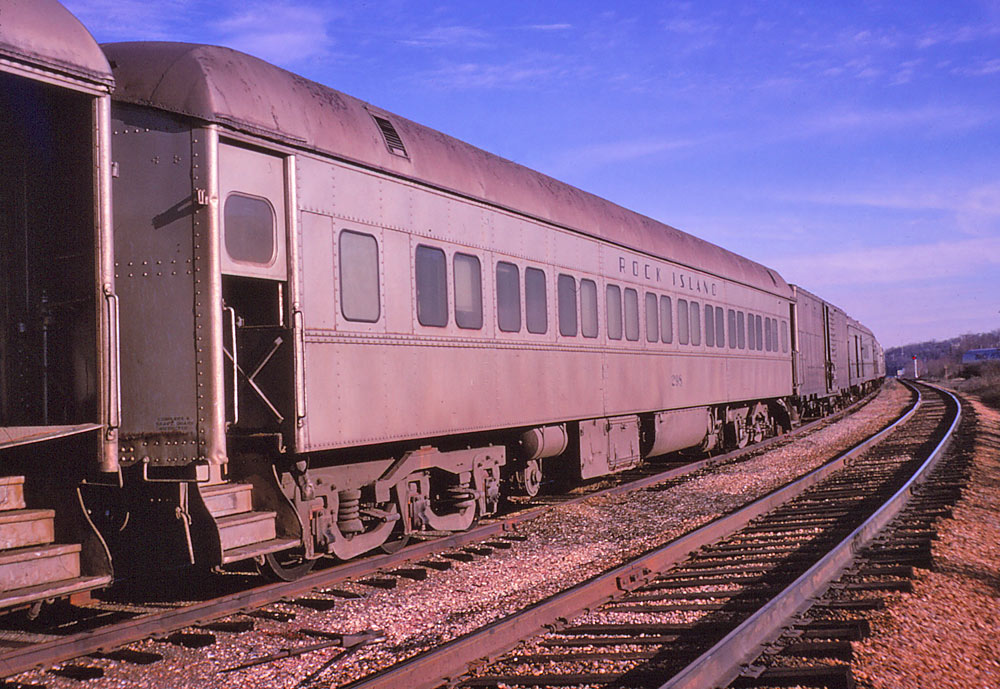

Rock Island coaches 297, 298 and 299 await the move to Biddle to begin their conversion to M/W service. At this point in their career, the cars were still in relatively good condition, with interiors still intact. Note the blanked vestibule which is readily apparent on the near end of car 299. Pulaski siding (Little Rock), January 1969. Photos by Bill Pollard

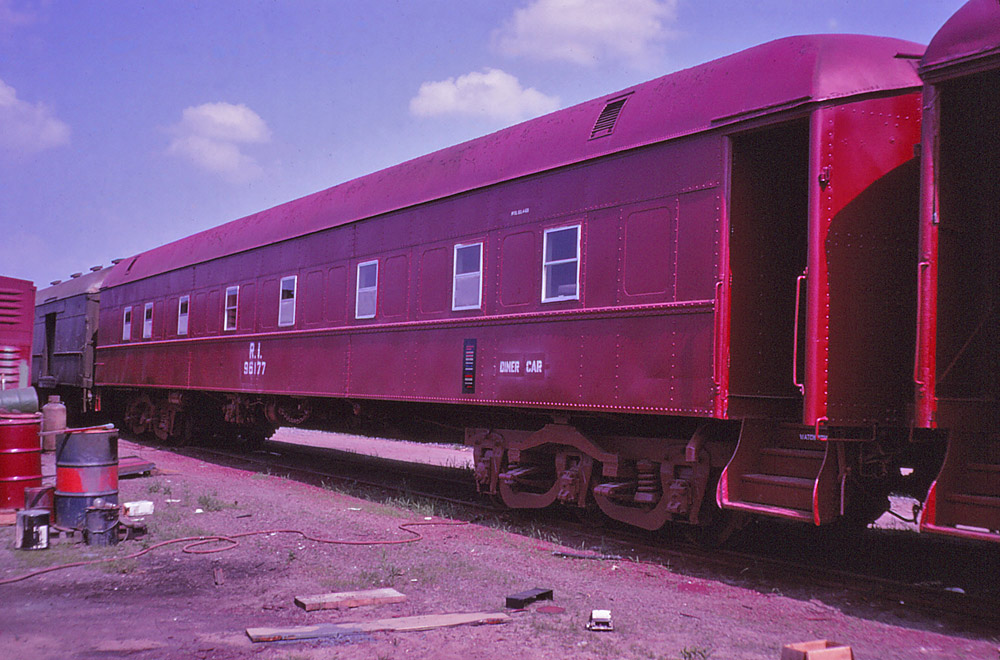
According to Rock Island paperwork, the conversion on all three coaches was completed on April 4, 1969. This date should be viewed as the approximate date, the date that the paperwork was completed. These same records also incorrectly show the renumbering for two of the coaches, reversing the order in which each were converted to bunk cars. As photographic evidence will soon show, coach 297 actually became bunk car 96179, while coach 299 became bunk car 96178. As part of the conversion on each car, over half of the windows on each side were blanked over, and the remaining eight thermopane windows were replaced with screened windows that would open, since air-conditioning was a luxury not provided on work equipment. We can only imagine how effectively those tiny windows cooled a car with a dark red exterior absorbing the heat from a hot summer sun.
Fast forward a decade... the maintenance of way union had negotiated terms whereby most track crews stayed in hotels or trailers, and for the most part, bunk cars and work train diners had become a thing of the past. In retirement, two of the ex-B&O cars were reunited at an obscure station on the Grand Prairie - Mesa, Arkansas. In its day, Mesa had been an important junction where the Stuttgart branch and the Searcy branch met the Rock Island mainline. In recent years, however, branchline trains ran through Mesa to Stuttgart. The Searcy branch was abandoned west of Des Arc, and embargoed for the track that remained. The first several miles of this branch were used to store old cars, and the two ex-B&O coaches turned bunk cars joined almost a hundred old freight cars on that line.

At the same time, the Rock Island in Arkansas was itself disappearing, a victim of corporate greed of competiting railroads and the apathy of some Arkansas political leaders who failed to understand the value of the railroad. When rail service ended, the old cars were stranded at Mesa. The trustee's clean up crew made several trips from Biddle to Mesa with locomotive 829 to gather newer freight cars that were candidates for resale, but the B&O coaches were not among that group. In early 1982, track removal began on the Stuttgart and Des Arc branches, and soon thereafter a wholesale scrapping operation of the long-stored freight cars began. Missouri Pacific at that time was operating the former Rock Island mainline as far east as Hazen, and they made a number of trips the additional 5 miles to Mesa to deliver gondolas to load the material salvaged from the scrapped cars. A Little Rock scrap dealer, A. Tennenbaum Company, purchased and cut up many of the stored cars at Mesa, as well as stored cars at Screeton, Galloway and Brittain. Photos of actual scrapping of the coaches are not known to exist, but both 96178 and 96179 were sold to Tennenbaum in September 1983 and are presumed to have been cut up at Mesa soon thereafter.

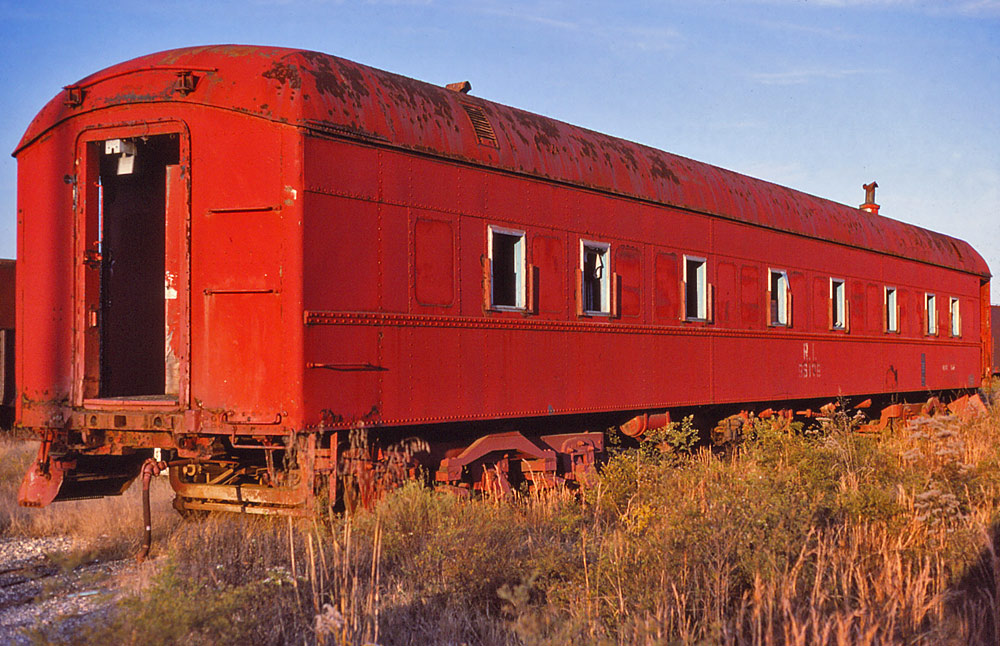

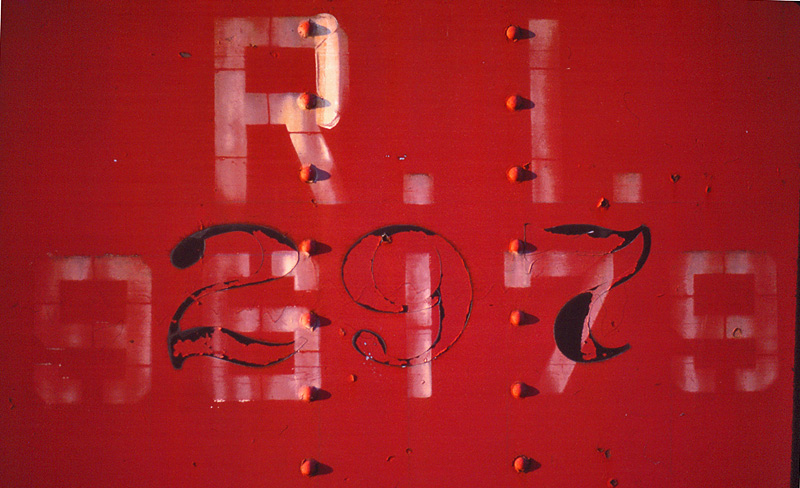

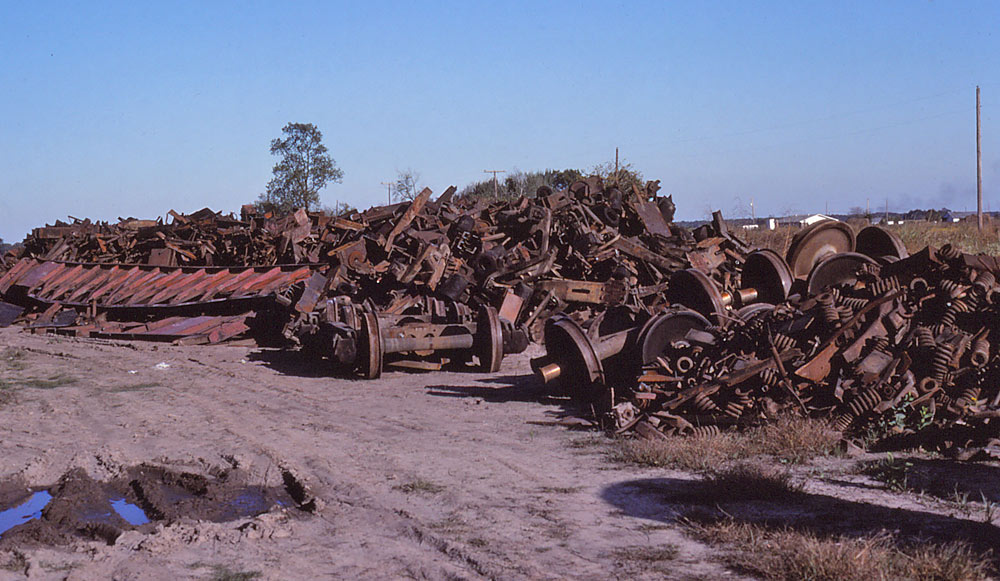
The third B&O car, 96177, moved around the system and was photographed as far north as Blue Island in August 1978. By the time the Rock Island shut down in March 1980, 96177 had migrated back to El Reno. Along with former RPO M/W passenger cars 96180 and 96182, the 96177 was sold to Sunbelt Railway Service in November 1983. Sunbelt was an operation of John Henson, a former Rock Island employee, who did freight car repairs on the former water works spur and car cleaning tracks on the edge of the El Reno yard. Sunbelt purchased the cars for possible resale and the former B&O coach and one RPO were indeed resold to Tri-State Dozers, an oilfield service company. The cars were moved in March 1984 to a location on Oklahoma Highway 92, just north of NW 10th Street in the southwest part of Yukon, OK.


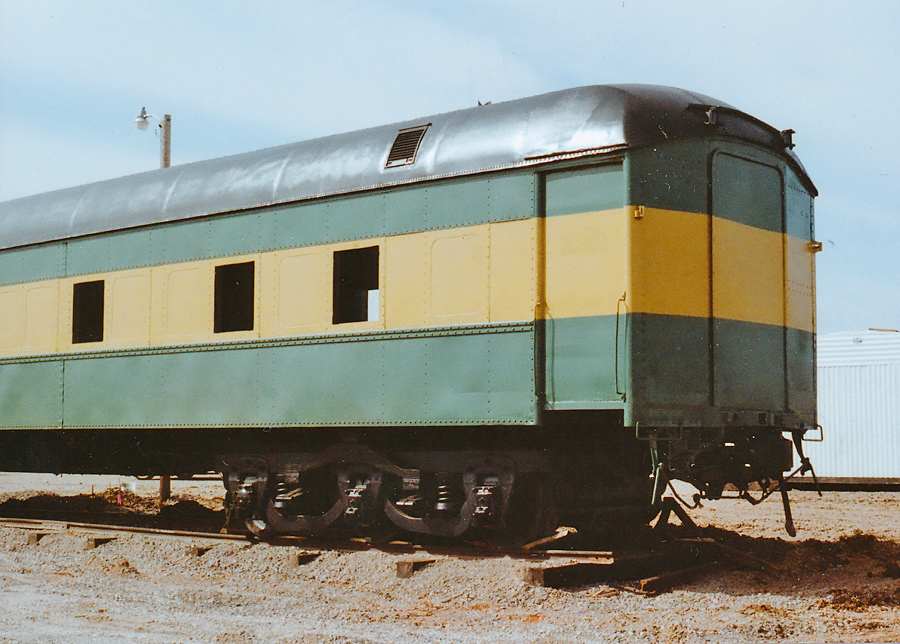
On March 16, 1984, one RPO and the former B&O coach are being maneuvered onto a section of track in Yukon. As can be seen from the heavy equipment involved, the purchase price of the cars was only a small part of the total investment required. Photos by Jack Austerman
The coach was subsequently restored as an office, with a new double doorway cut in the middle of car, and with marker lights mounted on each side of the door. After being in Yukon little more than a year, the cars were sold in July 1985 to Kal Drilling Company. The RPO was moved to Oklahoma City for possible resale and the coach was relocated to a private residence in Tuttle, OK, where it was outfitted as a cabana and game room near a swimming pool. The subsequent disposition of the RPO is unknown, but the B&O coach that was originally RI 298, still exists in Tuttle as of 2014. Thanks to Dr. Jack Austerman for extensive research which resulted in learning the travels of this car after it left the Rock Island.
Update on coach 298: At the urging of Dr. Austerman, the City of Yukon obtained coach 298, moved it to a trackside location in Yukon next to the Yukon's Best Railroad Museum, repainted the car in its original silver colors with black Rock Island lettering, and now use the car as part of the museum.